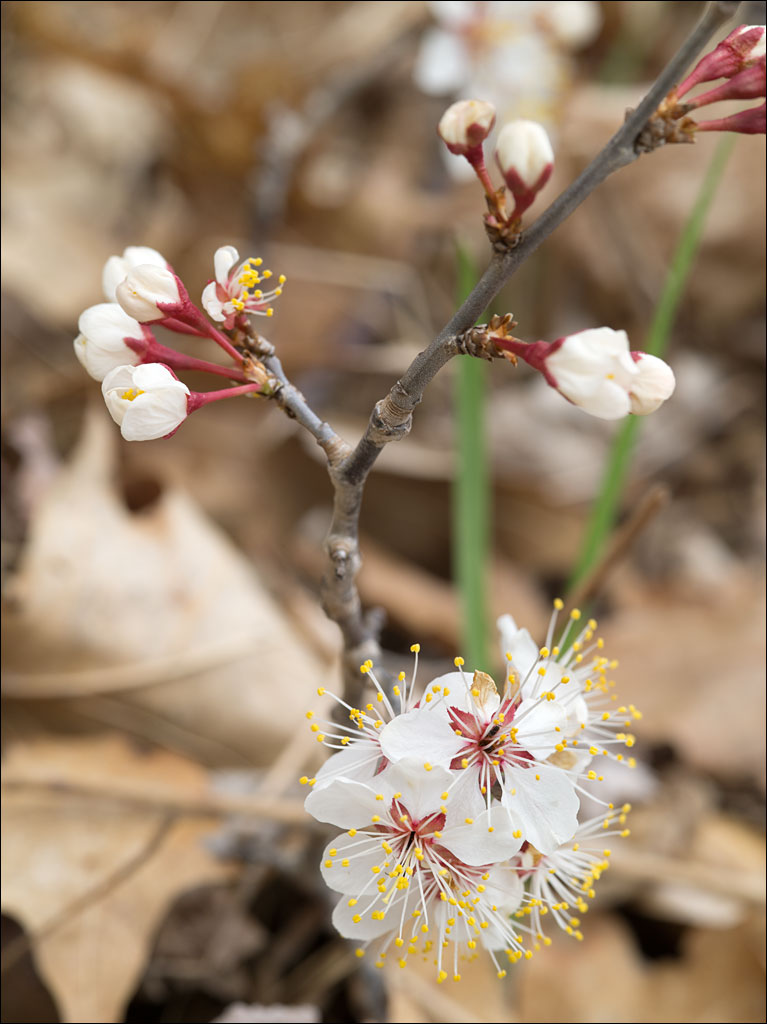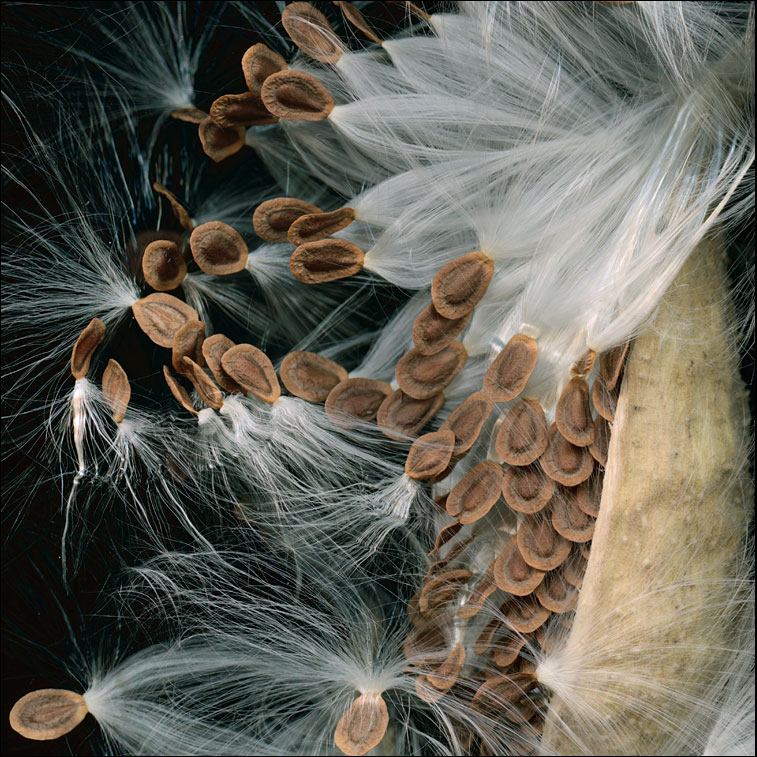 Naomi and I were collecting blackberries from our field last evening. This time of year there seems to be a richness to the variety in the greens in the landscape. The yellow greens of spring remain, but there is a shift to blue greens of the maturing foliage of the trees. The blackberry canes start their transition to the reds of fall. Click on the image for a larger view.
Naomi and I were collecting blackberries from our field last evening. This time of year there seems to be a richness to the variety in the greens in the landscape. The yellow greens of spring remain, but there is a shift to blue greens of the maturing foliage of the trees. The blackberry canes start their transition to the reds of fall. Click on the image for a larger view.
Tag Archives: Wild Plants
Blackberry in Bloom
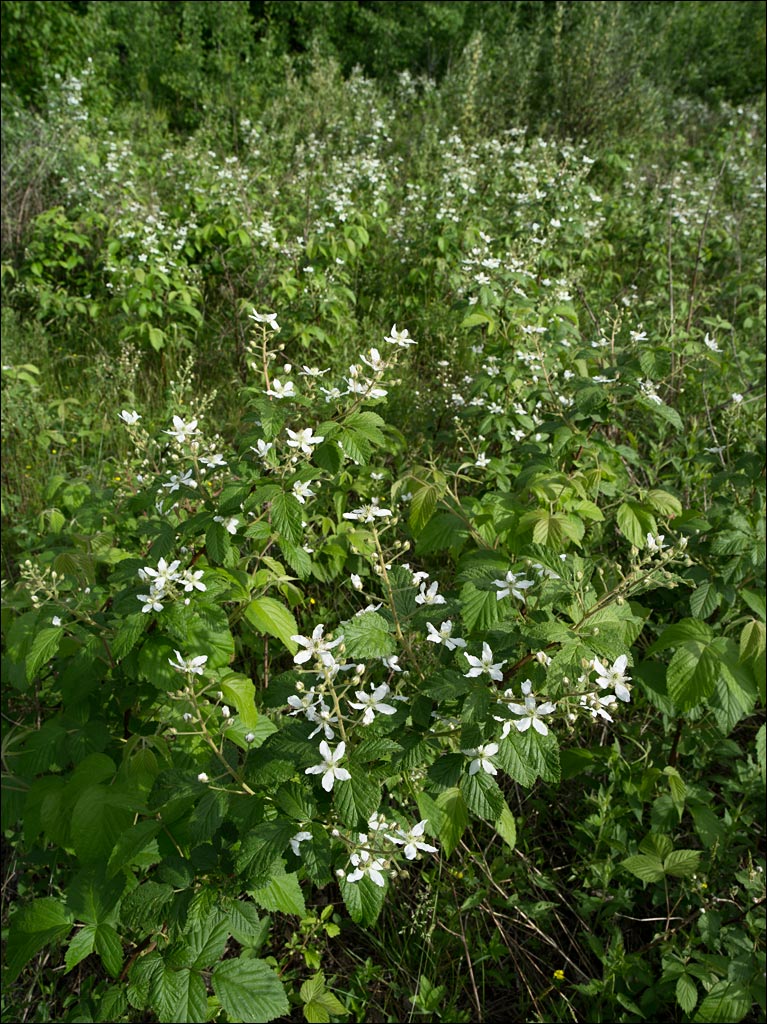 Our fruit plants are going through their annual flowering cycle. At the beginning of May, our wild plum was in bloom. The middle of may brought the blossoms out in our apple and peach trees. Now our blackberry canes are blossoming. These are in our field, but the blackberry under our forest canopy are also out. Click on the image for a larger view.
Our fruit plants are going through their annual flowering cycle. At the beginning of May, our wild plum was in bloom. The middle of may brought the blossoms out in our apple and peach trees. Now our blackberry canes are blossoming. These are in our field, but the blackberry under our forest canopy are also out. Click on the image for a larger view.
May Day 2016
Aaaaggh…
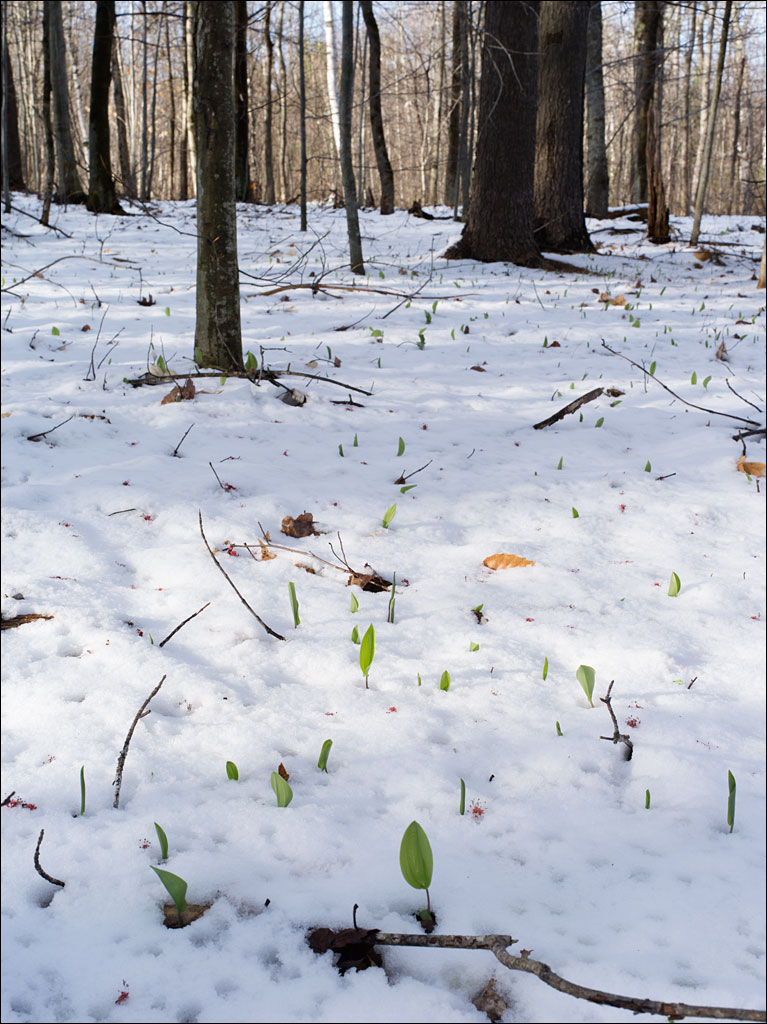 Yesterday was April 26th (not March 26th, although it looked like it). It snowed all day. This is a bit disheartening. Naomi and I hope the cold has not harmed the budding plants. We are supposed to go below freezing for the next few nights. The daytime temperatures should be in the 50s, which will help. Click on the image for a larger view.
Yesterday was April 26th (not March 26th, although it looked like it). It snowed all day. This is a bit disheartening. Naomi and I hope the cold has not harmed the budding plants. We are supposed to go below freezing for the next few nights. The daytime temperatures should be in the 50s, which will help. Click on the image for a larger view.
Red Trillium
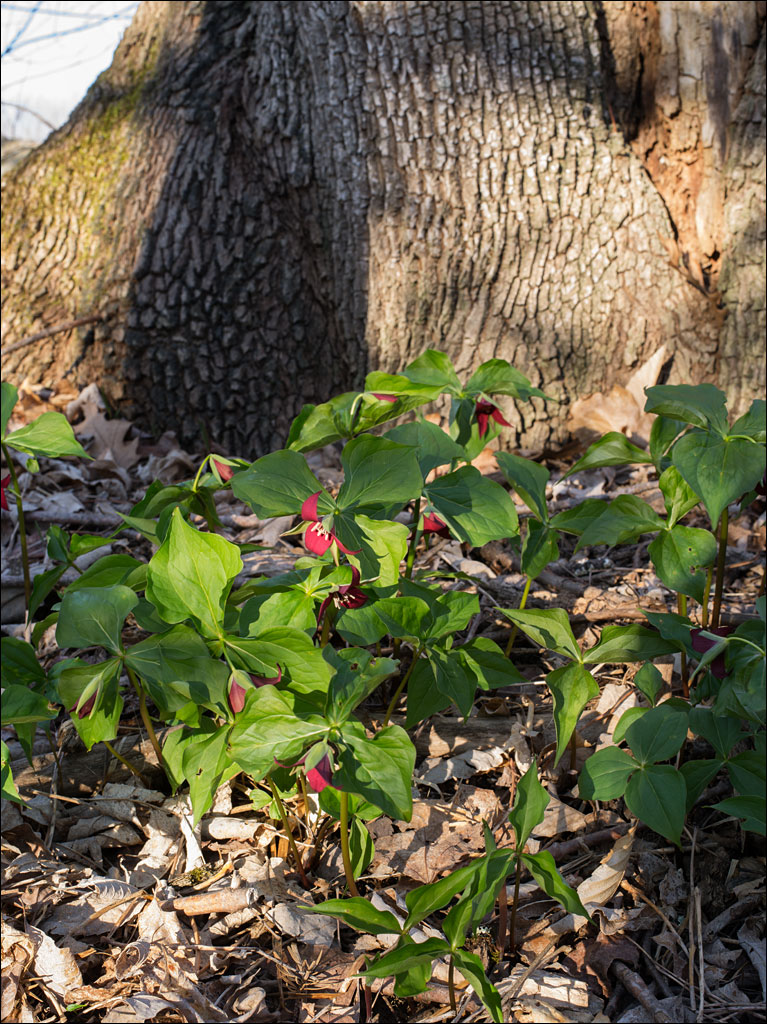 We have been having a stretch of warm weather, at least in the low 60°F. The warmth has felt really good, especially since the last two winters have been really long. And with this warm spell, we are seeing a return of life. One of the plants that has just returned to our forest floor is the red trillium or trillium erectum. Like the robin, it is a herald of spring, which gives it its common name—wake-robin. But it is a spring ephemeral, a short-lived plant, surviving long enough to complete its reproduction cycle. By the time the fern return, this plant will be gone. Two things about this herbaceous perennial: it is toxic and the bloom smells like rotting meat (flies are its primary pollinator). Click on the image for a larger view.
We have been having a stretch of warm weather, at least in the low 60°F. The warmth has felt really good, especially since the last two winters have been really long. And with this warm spell, we are seeing a return of life. One of the plants that has just returned to our forest floor is the red trillium or trillium erectum. Like the robin, it is a herald of spring, which gives it its common name—wake-robin. But it is a spring ephemeral, a short-lived plant, surviving long enough to complete its reproduction cycle. By the time the fern return, this plant will be gone. Two things about this herbaceous perennial: it is toxic and the bloom smells like rotting meat (flies are its primary pollinator). Click on the image for a larger view.
Thanksgiving Dinner
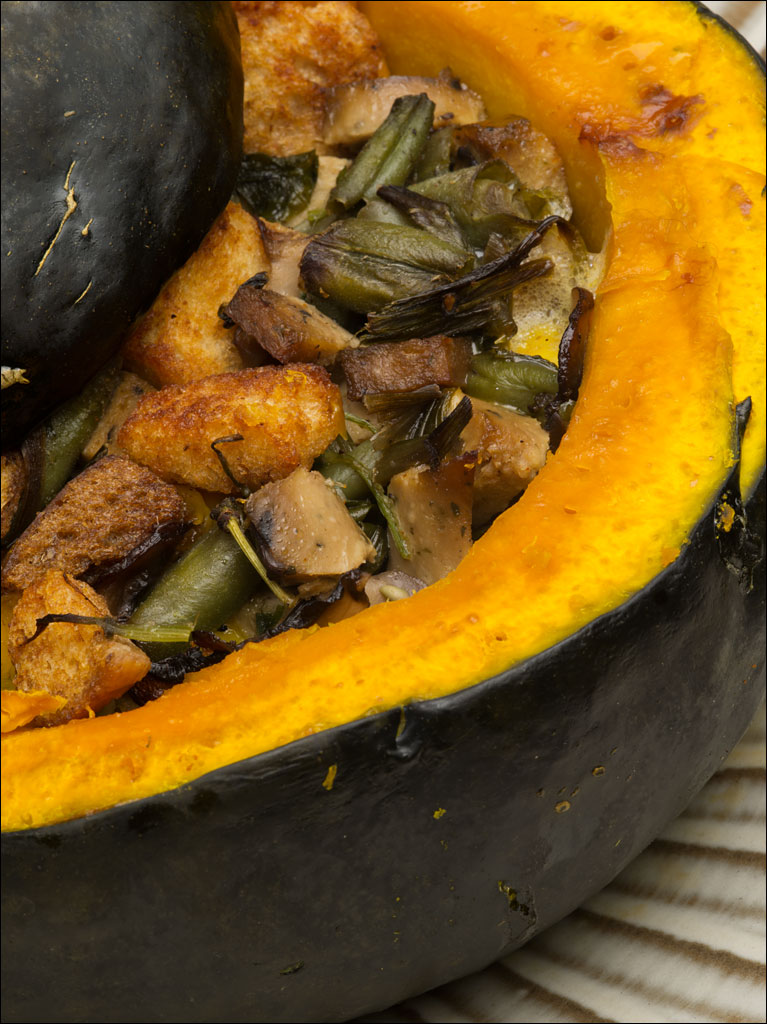 Naomi and I don’t eat meat. For Thanksgivings we made a stuffed kabocha. Kabocha is a well known squash in Japan. You can eat the cooked flesh by itself or stuff the entire fruit. For the stuffing, we used ingredients from our garden: plantain, spiderwort, day lilies, goutweed, and bush beans. We added some vegetarian sausage, mushrooms, croutons, and cheese. (This would be good for other holidays, feasts, or an everyday meal.) Click on the image for a larger view.
Naomi and I don’t eat meat. For Thanksgivings we made a stuffed kabocha. Kabocha is a well known squash in Japan. You can eat the cooked flesh by itself or stuff the entire fruit. For the stuffing, we used ingredients from our garden: plantain, spiderwort, day lilies, goutweed, and bush beans. We added some vegetarian sausage, mushrooms, croutons, and cheese. (This would be good for other holidays, feasts, or an everyday meal.) Click on the image for a larger view.
Milkweed
Lost Varieties—Apples of Maine
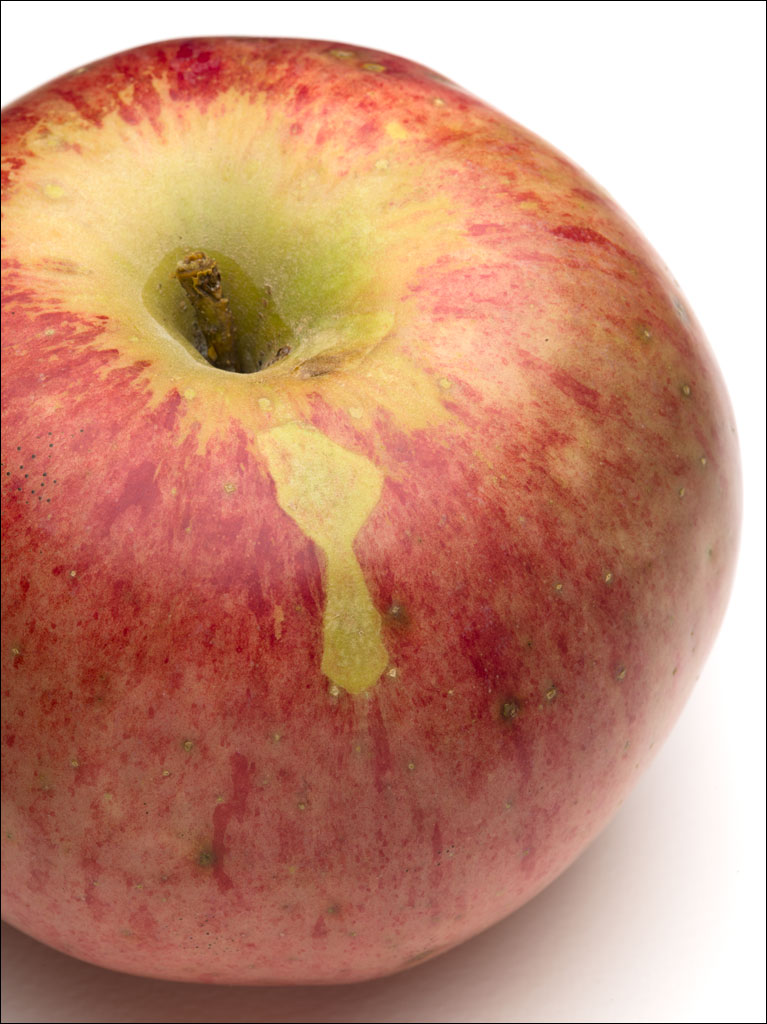 Throughout Maine are lost varieties of apples growing in old fields. While our supermarkets limit our choice, usually red, yellow, and green, thousands of apple varieties have been cultivated. Some have been saved in seed banks and specialty orchards, but many have been lost to time and memory—it can be hard to identify an apple by appearance.
Throughout Maine are lost varieties of apples growing in old fields. While our supermarkets limit our choice, usually red, yellow, and green, thousands of apple varieties have been cultivated. Some have been saved in seed banks and specialty orchards, but many have been lost to time and memory—it can be hard to identify an apple by appearance.
We have one lost variety on our land. It fruits biennially and produces large, round apples. The flesh is white and very light; despite the size, they do not weight that much. It is not a sweet apple, but neither does it have a sharpness of a Granny Smith. Lemony would be a good description. If you cook it, it takes on a pleasant sweetness, but it does not retain its shape. We eat this raw or make apple sauce for itself or as pie filler. Click on the image for a larger view.
End of the Blackberry Harvest
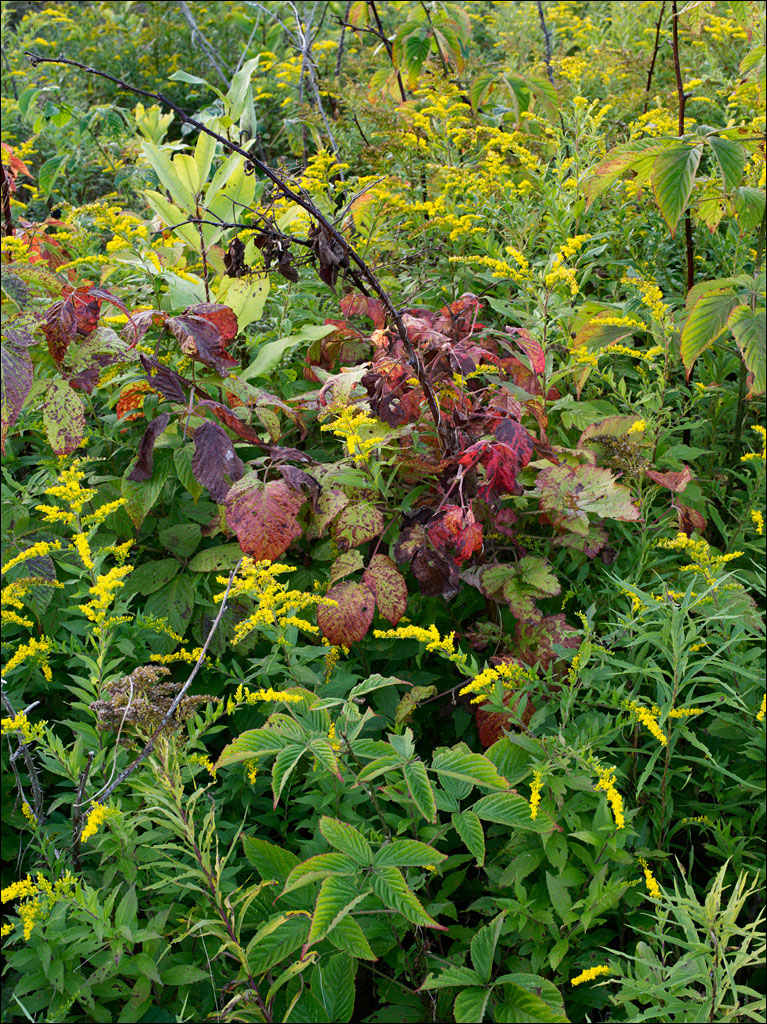 Our blackberry harvest is drawing to a close. We had a great crop, which we mostly froze to use over the winter. We kept some fresh for our breakfast, though. The blackberry canes in our field are starting to turn color. They tend to be the first signals of the ending summer, even while our golden rod remain in bloom. Click on the image for a larger view.
Our blackberry harvest is drawing to a close. We had a great crop, which we mostly froze to use over the winter. We kept some fresh for our breakfast, though. The blackberry canes in our field are starting to turn color. They tend to be the first signals of the ending summer, even while our golden rod remain in bloom. Click on the image for a larger view.
Blackberry Harvest 2015
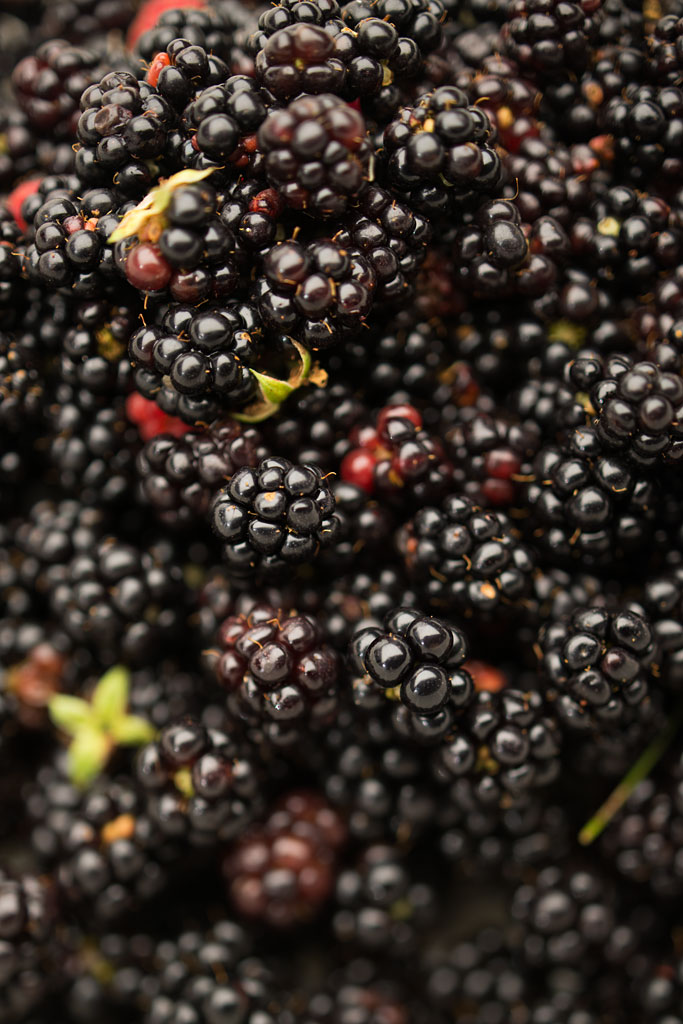 A month ago, our blackberries were green. This week, we began our annual harvest. This usually lasts about a month depending on the size of the crop. It looks like it might be a good year. Click on the image for a larger view.
A month ago, our blackberries were green. This week, we began our annual harvest. This usually lasts about a month depending on the size of the crop. It looks like it might be a good year. Click on the image for a larger view.

